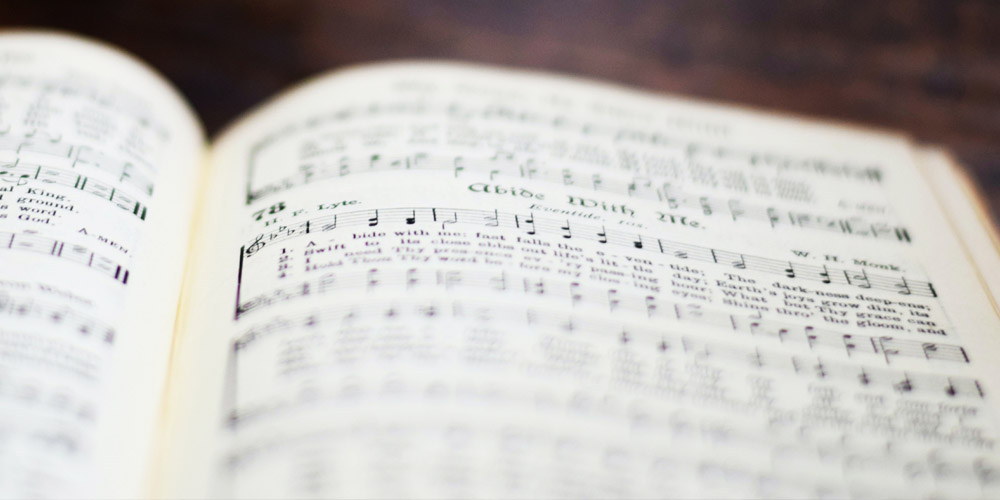If we want our assemblies to be alive, our worship must be alive, and in turn, so must our music. Many will agree that music reaches and expresses our deepest feelings more powerfully than words alone.
Our worship is redeemed man’s loving and living response to God, not conducted for our pleasure, but for the glory of God. Worship is the Christian’s highest privilege and deepest responsibility.
Whether one reads accounts from church history or attends a modern worship meeting, music is almost certain to be a common ingredient. Man has a natural inclination toward musical expression, though styles might differ significantly. To better understand the relationship between music and worship, we need first to define worship, understand the (commonly accepted) components of worship, and the role of music in worshipping the Almighty.
Theologians, preachers, philosophers, and musicians have pondered the term “worship” for centuries. Etymologists tell us the word worship was simply formed by combining two Anglo-Saxon words, “weorth” and “scipe.” This resulted in the noun worth-ship, the ascription of worth or value to an object or person; and the value one places on an object or person determines one’s attitude toward and measure of worship. Let me suggest we simply define worship as our total offering to God of acts and attitudes that have been purged of self.
Isaiah 6:1-8, 1 John, and Colossians 3 can be summarized in four (generally accepted) aspects of worship: 1) Adoration, 2) Confession and Forgiveness, 3) Challenge, and 4) Dedication. While there are other views on this subject, I will use these aspects only as an example to express a thought. The table below demonstrates each section and the associated music:
Steps to Worship Music to Support the Steps
- Adoration: My Jesus, I Love Thee
- Confession/Forgiveness: Who is On the Lord’s Side?
- Challenge: Lead On, O King Eternal
- Dedication: Holy, Holy, Holy
This example begins the meeting with “My Jesus, I Love Thee,” a hymn of confession sung without adequate heart preparation. Individuals must quickly confess their sins before they have had time for soul-searching. “Who is On the Lord’s Side?” presents the challenge before the vessel is clean. “Lead On, O King Eternal” is sung and we do not know where we are going. Finally, we close with “Holy, Holy, Holy,” a hymn that would have been more effective in creating adoration. A more appropriate arrangement of hymns follows:
Steps to Worship Music to Support the Steps
- Adoration: Holy, Holy, Holy
- Confession/Forgiveness: My Jesus, I Love Thee
- Challenge: Who is On the Lord’s Side?
- Dedication: Lead On, O King Eternal
Now the hymn texts follow a logical progression to better support the worshipping assembly and the ultimate call to dedication and service.
Using music effectively in our meetings requires a combination of prayer, wisdom, and planning. The power of music to set or change moods must be used with care. A text wedded to the wrong music, a hymn played too fast or slow, in the wrong key, or improperly introduced can have an effect opposite to that desired. The music we use in our worship is not to simply fill time; rather, when used properly, the musical amplification of an idea underscores any portion of our meetings. Music is a powerful teaching tool and plays a significant role in spiritual development as can be learned from the (44+) books of the Bible that mention music in one way or another. Music was a vital element in worship and daily life throughout both the Old and New Testaments making it an important ingredient in the worship of God today.
From the Old Testament choirs until today, music is a vibrant means by which our faith is expressed. The music of the church is part of its very life, and the gathered assembly is a choir—practicing here on earth for our life in eternity, and those who lead the music should enable and empower this “choir” to sing.
Psalm 27 is a well-known Psalm of David, usually known best for its opening verses. David, who is experiencing fear because he is under attack from his enemies, gives testimony to his faith and lays out his strategy for coping with the difficulties he is facing. He explains that he goes to the house of the Lord, gazes on the beauty of the Lord, and seeks safety in God’s care. The result is that he need not be afraid, and when he successfully finds peace and safety, he breaks forth in song to God. From this we can conclude that one of the marks of a healthy church is that it sings and makes music to God. The soul of a healthy church needs to break forth in song.
Several marks of the song of the church stand out:
The church sings from experience. David first seeks and finds the care of God, and “then” (note the first word of verse 6; HCSB version) he sings. Our song is the result of our experience of God’s grace and care.
The church sings corporately. David went to the Tabernacle to join others. While we enjoy singing alone (and God enjoys it too!), our song takes on new significance when we sing with others. The church sings heavenward. David doesn’t sing to others, or to himself, but to God. What a phenomenal privilege to think that God is listening while we are singing.
The church sings intergenerationally. Though it isn’t specifically addressed in this passage, the Old Testament practice showed that Hebrew families came to the Tabernacle and Temple together. Their song surely included all voices.
Perhaps a caution is in order here. David speaks of “shouts of joy” and the Psalms repeatedly talk about “songs of praise,” and we sing praises to God for who He is and how He has cared for us, but there are many circumstances in life that make it difficult to sing praise. Life’s stresses can mute our praise, and in every group, there are a number who find it difficult to sing praise because life has been hard for them. We cry out our laments, our sorrow, and complaints to God.
We sing our confessions and sorrow for sin, or we sing out our testimonies of faith and commitment. The song of the church, like the psalms, has many expressions to reflect and form the body of Christ.
Our music takes on a whole new dimension because of the finished work of Christ. Our song reaches its climax when we sing of God’s perfections, His mighty acts in the birth, death and resurrection of the Lord Jesus Christ, our eternal hope, and our anticipation of the return of Christ, and the final consummation.
Those who lead us in singing have a high privilege and awesome responsibility. Our music must focus on our vision and help us to continue the work Christ left unfinished via the ministry of music in our assembly. What a privilege we have—to use music in such a powerful way to complement our corporate worship together.

